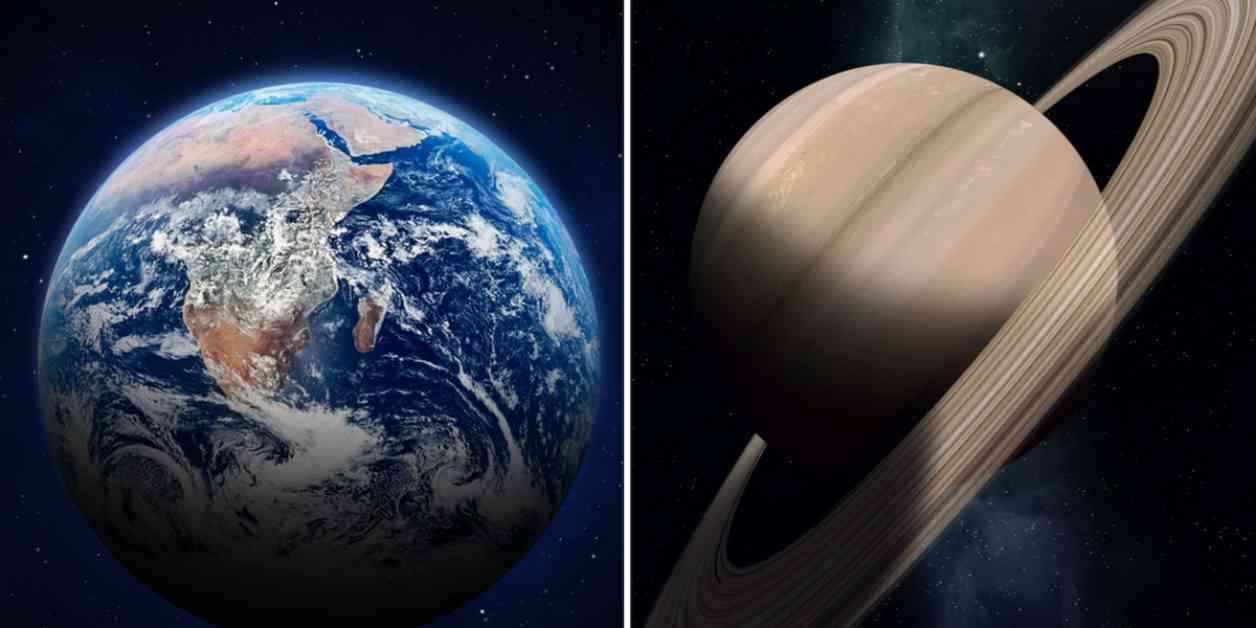Earth’s Potential Past Saturn-like Ring: Scientists’ Discovery
Saturn is a planet widely recognized for its iconic rings, but a groundbreaking new study suggests that Earth may have also had a similar ring system over 50 million years ago. The research, which analyzed 21 asteroid craters dating back to 466 million years ago – known as the “Ordovician impact spike” – has shed light on this fascinating possibility.
Asteroid Craters and Equatorial Location
The asteroid craters studied in this research were all conveniently located near the equator, sparking curiosity among scientists for several reasons. Firstly, during this time period, over 70 percent of the planet’s continental crust was situated outside of this equatorial region. This anomaly raised questions about why these impact sites were concentrated in one area. Additionally, asteroid strikes are typically random events, resulting in craters scattered across different locations, much like the ones observed on the Moon and Mars.
Initially, experts believed that a large asteroid was responsible for the impact pattern near the equator. However, the latest study proposes a different theory – tidal forces caused the asteroid to disintegrate, forming a debris ring around Earth akin to Saturn’s distinctive rings. Andy Tomkins, the study’s author from Monash University in Australia, elaborated on this theory, stating, “Over millions of years, material from this ring gradually fell to Earth, creating the spike in meteorite impacts seen in the geological record.”
Potential Climate Implications
The existence of a debris ring encircling Earth could have had significant climate implications. Such a ring would have cast a shadow on parts of the planet, potentially blocking sunlight and affecting global temperatures. This phenomenon may have contributed to the “Hirnantian Icehouse,” a period of intense cooling that marked one of the coldest times on Earth in the past 500 million years.
During the Hirnantian Icehouse (463-444 million years ago), Earth experienced a peculiar climate scenario characterized by both extreme cooling and high levels of carbon dioxide, a potent greenhouse gas. Researchers believe that the debris ring may have played a role in exacerbating these climatic conditions.
Impact on Earth’s Landscape
The study also examined the surface areas across continents capable of preserving craters during that time period. Regions such as Western Australia, Africa, the North American Craton, and limited areas of Europe were identified as potential sites for crater preservation. Despite only 30 percent of the land area being near the equator at that time, every impact crater discovered was located in this specific region.
The likelihood of all impact structures occurring in this equatorial zone was compared to tossing a three-sided coin and getting tails 21 consecutive times. Researchers concluded that the fragments resulting from the asteroid breakup formed a debris ring that decayed over tens of millions of years, leading to a spike in impact crater formation near the equator.
This hypothesis provides a plausible explanation for the concentration of impact structures in proximity to the equator during the Ordovician period. It challenges previous assumptions about the randomness of asteroid impacts and offers new insights into the Earth’s geological history.
In conclusion, the study published in the Earth and Planetary Science Letters journal revolutionizes our understanding of how Earth’s climate may have been influenced by past events like the formation of a debris ring. The findings highlight the intricate interplay between celestial phenomena and terrestrial conditions, shaping the planet’s climate and landscape over millions of years.













